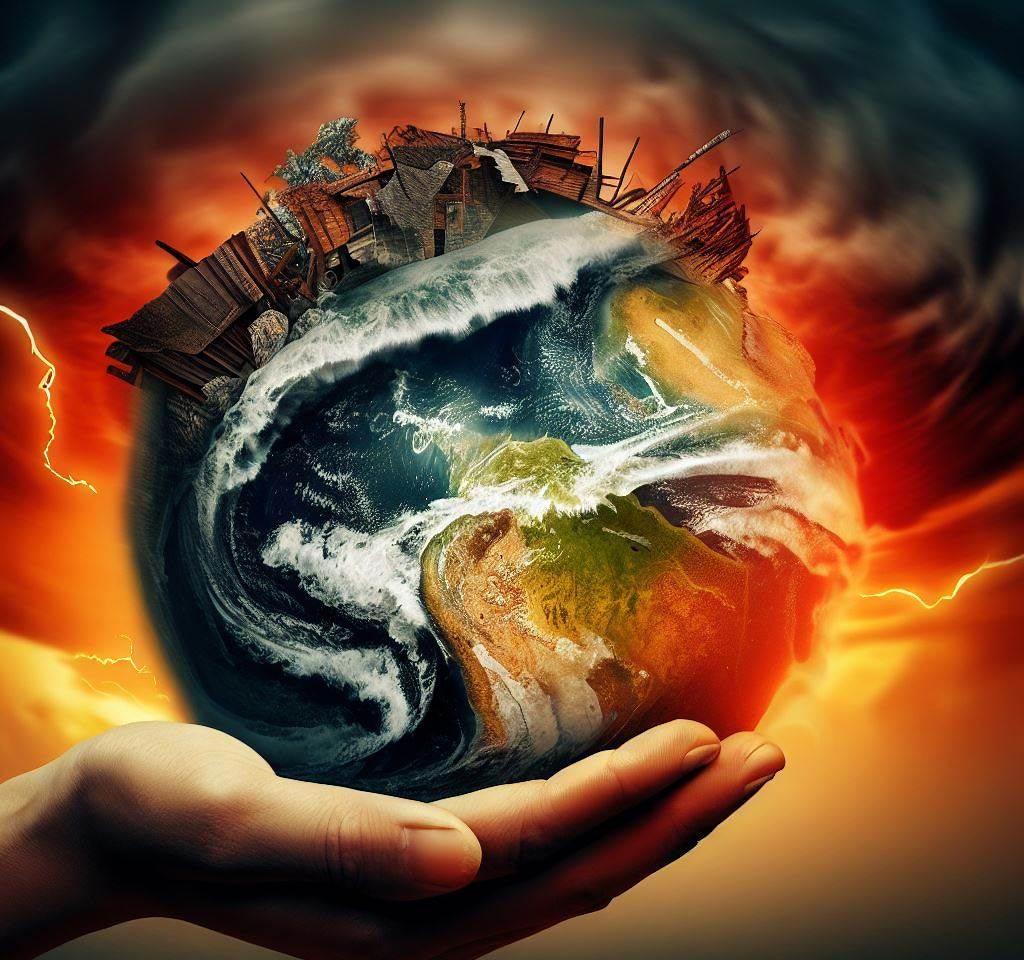
Global Impact of the World's Worst Natural Disasters
Introduction
A "natural disaster" can be defined as a catastrophic event that occurs due to natural processes of the Earth. From earthquakes to tsunamis, hurricanes to droughts, these calamities have wreaked havoc on our planet throughout history. The consequences of these cataclysms extend beyond immediate destruction, affecting human life, economies, and the environment for years to come. In this comprehensive overview, we delve into the historical data of the world's most severe natural disasters, their devastating impacts, survival stories, and the role of climate change in exacerbating these events.
Historical Perspective of Major Natural Disasters
Earthquakes
"Earthquakes" represent one of the deadliest natural disasters. They occur when the Earth's tectonic plates move, causing the ground to shake violently. An earthquake's impact can be localized or widespread, with aftershocks often causing additional damage. The deadliest earthquake on record is the 1556 Shaanxi earthquake in China, which claimed approximately 830,000 lives.
Tsunamis
"Tsunamis," often triggered by earthquakes, are sea waves that can reach incredible heights and move at high speeds, causing immense destruction when they hit land. The 2004 Indian Ocean Tsunami, triggered by an undersea earthquake off the coast of Sumatra, is among the most devastating tsunamis in history, causing around 230,000 to 280,000 deaths across 14 countries.
Hurricanes
"Hurricanes," also known as cyclones or typhoons in different parts of the world, are storms characterized by strong winds and heavy rainfall. They can lead to catastrophic flooding, wind damage, and storm surges. The Great Hurricane of 1780 holds the record as the deadliest hurricane in history, resulting in 22,000 deaths in the Caribbean.
Droughts
"Droughts" occur when an area experiences a prolonged period of dry weather, resulting in a severe water shortage that impacts agriculture, ecosystems, and human health. The 1983-85 Ethiopian drought led to a severe famine, resulting in an estimated 400,000 deaths.
The Impact of the World's Deadliest Natural Disasters
Natural disasters have far-reaching consequences. They do not merely cause immediate destruction and loss of life; their effects permeate every aspect of society.
Impact on Human Life
The loss of life in the wake of a disaster can be staggering. For instance, the earthquake in Haiti in 2010 killed approximately 230,000 people. But the toll of a disaster isn't measured only in fatalities. Displacement, injury, psychological trauma, and disruption to social networks are also significant aspects of the "impact of the world's deadliest natural disasters."
Economic Consequences
"Economic consequences of major natural disasters" can be profound and long-lasting. The 2011 earthquake and tsunami in Japan, for example, caused an estimated $360 billion in damages, making it the costliest natural disaster in history. These events can decimate local economies, disrupt global supply chains, and necessitate billions in recovery and reconstruction efforts.
Environmental Impact
Natural disasters also have a significant impact on the environment. Forest fires can result in loss of wildlife habitats, hurricanes can damage ecosystems with storm surges and flooding, and droughts can cause land degradation. For instance, the 2019-2020 Australian bushfires led to the death or displacement of nearly three billion animals.
Survival Stories from Worst Natural Disasters
Despite the immense tragedy that these events often entail, there are countless "survival stories from worst natural disasters" that remind us of human resilience. Take the story of Hiromitsu Shinkawa, who survived the 2011 Japanese tsunami by clinging to the roof of his house, which had been swept away by the wave. Or the story of the "Miracle Girl," Darlene Etienne, who was rescued from the rubble 15 days after the 2010 Haiti earthquake. These stories provide a glimpse of hope amidst the chaos and destruction, exemplifying the indomitable human spirit.
Global Climate Change and Severe Natural Disasters
Climate scientists have long warned that global warming could lead to more intense and frequent extreme weather events. The intensification of hurricanes and the prolongation of drought periods provide compelling evidence for the connection between "global climate change and severe natural disasters."
Hurricanes, for instance, draw their energy from warm ocean waters, and as global temperatures rise, these storms are expected to become more intense. Similarly, as temperatures rise, evaporation increases, which can exacerbate drought conditions and lead to more frequent and severe wildfires.
Preventive Measures for Catastrophic Natural Disasters
Given the increasing frequency and intensity of these "catastrophic natural disasters," the implementation of preventive measures and disaster response strategies has never been more crucial. Here are some of the global strategies employed:
-
Early warning systems: Technologies such as seismometers for earthquakes, weather satellites for hurricanes, and automated gauge systems for tsunamis can provide crucial minutes or hours of warning.
-
Infrastructure planning and building codes: Constructing earthquake-resistant buildings or elevating homes in flood-prone areas can mitigate disaster damage.
-
Education and drills: Teaching individuals how to respond during a disaster can save lives.
-
Disaster preparedness plans: Governments and organizations can develop comprehensive plans detailing how they will respond to disasters, including evacuation plans, emergency services coordination, and resource allocation.
-
Climate change mitigation: Addressing the root cause of increasing disaster frequency and intensity is paramount. This includes reducing greenhouse gas emissions and implementing strategies for climate change adaptation.
In conclusion, as devastating as the world's worst natural disasters can be, they also highlight the capacity of humanity to survive, rebuild, and innovate in the face of adversity. These events underscore the urgent need for global cooperation in disaster preparedness and climate change mitigation. The challenge is immense, but so too is our collective ability to effect change.
Remember, the Earth does not belong to us; we belong to the Earth. – Chief Seattle
History




